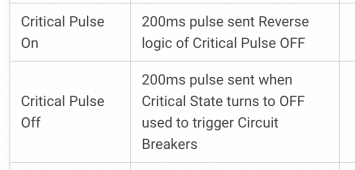100FUEGOS
New Member
- Joined
- Dec 22, 2019
- Messages
- 62
If you turn off your Batrium if / when the MCCB trips due to a critical fault then it does not really matter which option to choose. I choose to turn off everything except the Batrium hence the right function selected for the shunt trip coil, and I do not say this, Batrium says. They designed it this way.
But hey I am not saying you are doing it wrong on your setup it is that Batrium designed the whole Shunt trip mechanism with a different option than you chose for your use case scenario.
But hey I am not saying you are doing it wrong on your setup it is that Batrium designed the whole Shunt trip mechanism with a different option than you chose for your use case scenario.






